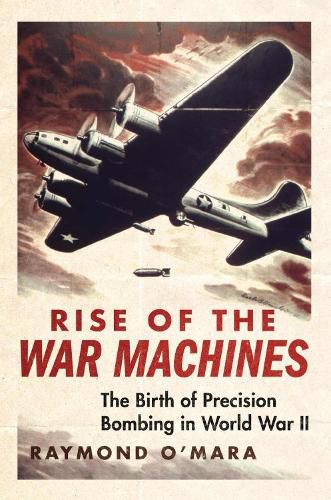Readings Newsletter
Become a Readings Member to make your shopping experience even easier.
Sign in or sign up for free!
You’re not far away from qualifying for FREE standard shipping within Australia
You’ve qualified for FREE standard shipping within Australia
The cart is loading…






Rise of the War Machines: The Birth of Precision Bombing in World War II examines the rise of autonomy in air warfare from the inception of powered flight through the first phase of the Combined Bomber Offensive in World War II. Raymond P. O'Mara builds a conceptual model of humans, machines, and doctrine that demonstrates a distinctly new way of waging warfare in human-machine teams. Specifically, O'Mara examines how the U.S. Army’s quest to control the complex technological and doctrinal system necessary to execute the strategic bombing mission led to the development of automation in warfare.
Rise of the War Machines further explores how the process of sharing both physical and cognitive control of the precision bombing system established distinct human-machine teams with complex human-to- human and human-to-machine social relationships. O'Mara presents the precision bombing system as distinctly socio-technical, constructed of interdependent specially trained roles (the pilot, navigator, and bombardier); purpose-built automated machines (the Norden bombsight, specialized navigation tools, and the Minneapolis-Honeywell C-1 Autopilot); and the high-altitude, daylight bombing doctrine, all of which mutually shaped each other’s creation and use.
$9.00 standard shipping within Australia
FREE standard shipping within Australia for orders over $100.00
Express & International shipping calculated at checkout
Stock availability can be subject to change without notice. We recommend calling the shop or contacting our online team to check availability of low stock items. Please see our Shopping Online page for more details.
Rise of the War Machines: The Birth of Precision Bombing in World War II examines the rise of autonomy in air warfare from the inception of powered flight through the first phase of the Combined Bomber Offensive in World War II. Raymond P. O'Mara builds a conceptual model of humans, machines, and doctrine that demonstrates a distinctly new way of waging warfare in human-machine teams. Specifically, O'Mara examines how the U.S. Army’s quest to control the complex technological and doctrinal system necessary to execute the strategic bombing mission led to the development of automation in warfare.
Rise of the War Machines further explores how the process of sharing both physical and cognitive control of the precision bombing system established distinct human-machine teams with complex human-to- human and human-to-machine social relationships. O'Mara presents the precision bombing system as distinctly socio-technical, constructed of interdependent specially trained roles (the pilot, navigator, and bombardier); purpose-built automated machines (the Norden bombsight, specialized navigation tools, and the Minneapolis-Honeywell C-1 Autopilot); and the high-altitude, daylight bombing doctrine, all of which mutually shaped each other’s creation and use.